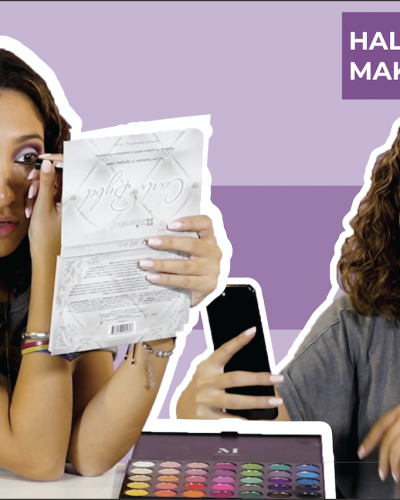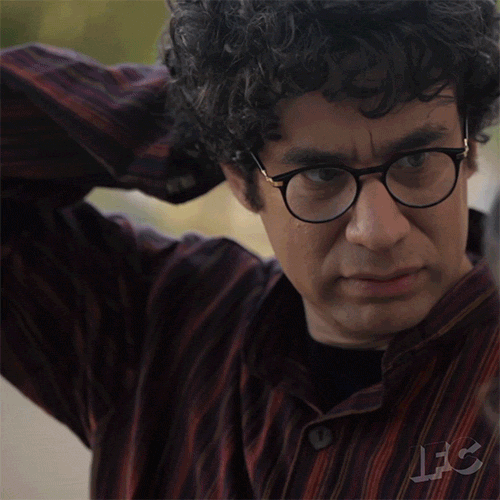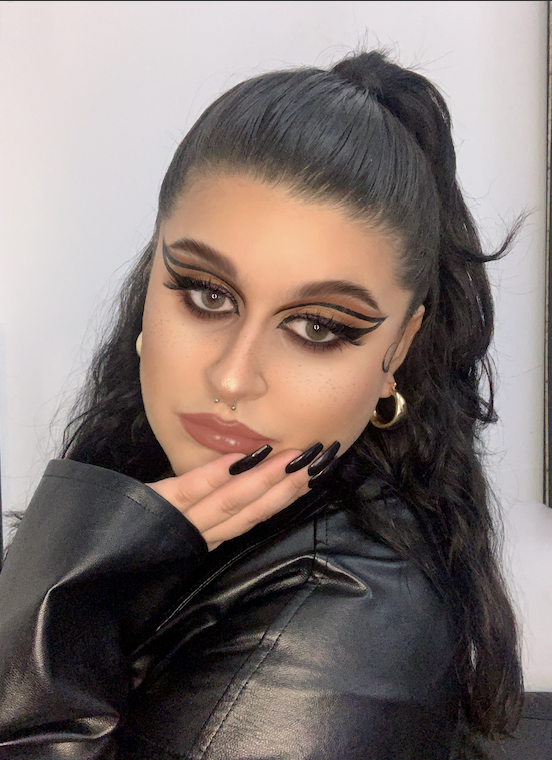You Will Defs Like these too
Life Video of The Day

Rund's Halloween Makeup TutorialOct.27.2020
New at The Modern East
Sign Up To Our Newsletter
[ninja_forms_display_form id=20]

Foundation is an essential item in your makeup bag of tricks. We know that as a beauty product, it is meant to help create an even tone to our skin. It can help to minimize blemishes, and achieve a more uniform complexion. Yes, this we know. But there is a ton of variation when it comes to foundation! There are different hues, different types, things like your undertone (more on that below) to consider. There are even ways to properly and improperly wear it! Confused? You’re not the only one. Makeup can be…a lot. But, we’re here to help with that.
Half the battle with foundation is knowing what shade is actually right for you. This is a known issue with foundation, and many of the big names in makeup are offering foundations which allegedly will match your skin tone on their own. You’ll see a lot of beauty blogs and vloggers talking about figuring out what your skin’s undertone is. There are three kinds of undertone: warm, cool, and neutral. The easiest way to tell which one you are is by looking at the underside of your wrist. If your veins there appear blue, your undertone is cool. Veins which appear green mean you are warm. If you can’t really tell, or your veins appear to be both colors, then you are a neutral.

Okay, you’ve figured out your undertone and you’re ready to do some browsing. As mentioned earlier, there is an utterly insane amount of foundations out there. But, aside from color, one of the other most important things to take into consideration is what type of skin a foundation is meant for. Usually, a skin-type that is recommended is listed right on the product. You might see something that says “for oily skin” or another that says “hydrating formula” for dry skin. Skin type definitely matters here. Be aware that oil free foundations can also oxidize, which means they will be darker when they dry. Also, while a foundation with a built in SPF is fantastic, the zinc oxide in it means that you may have a grey-ish appearance in photos, especially those with flash.

Not all foundations offer the same amount of coverage. This is a very good thing. Most typically hover between sheer, medium, and full on total coverage. If you want aspects of your complexion to still shrine through (like freckles), you’ll want to find something that says “lightweight” or “sheer”. If you want a little more coverage than that, but don’t quite wanna go full Monty, look for words like “satin finish” or “semi matte”. Lastly, if you have trouble with blemishes, hyper-pigmentation, or redness, you’ll want a more complete coverage. Seek out formulas that have “matte” or “full-coverage” on them.

Foundation comes in a lot of forms. Here are the main types, and what they’re good for.
Generally provide the best overall coverage. Good for those who need larger patches of skin evened out. Can work with most skin types, even combination skin. Easy application.
Usually comes in compact form. Good for gals on the go who might need an occasional touch up. Since it is dry, best on oily skin. Not great for fine lines, or for blemishes. Does provide a more natural look than some other types of foundation.
This is just basically liquid foundation that has air whipped into it. Lighter than regular liquid foundation and definitely feels it. Good for all skin types and ages.
Best for those who are really looking for blemishes to be covered. Good portability factor. A bit thicker than other types of foundation, but can pull double duty as a concealer as well.
The more organic and natural option of foundation. Usually found in sifter or compact form. Can get messy, so must apply with care. Not travel friendly.
Very very light coverage here as its main duty is moisturizing your skin. Not the best when it comes to discoloration or blemishes. But, will provide a nice, light boost to skin tone.
Good for all skin types. Will help even out skin tone and moisturize, and add a bit of color. More subtle than normal liquid foundations.
Very similar to BB cream. Adds light natural tint and small layer of coverage. Frequently contain anti-aging ingredients.

Sometimes we think we are much more fair or dark than we truly are. Plus, our complexions do vary a bit through the different seasons. The shade that was working for you at the height of summer might not match quite as well come winter. The best way to test if a shade is right for you is by trying it directly on your face in a few different places. If you can, it’s also ideal to test it out in different lighting. If you still can’t find that perfect shade, don’t be afraid to channel your inner mad scientist and try mixing a couple shades together.

Okay, so you’ve managed to find the foundation you want. Now you just need to know how best to apply it. Always start with a clean face, first and foremost. Next, consider using a primer to help your foundation do its job even more efficiently, and help make it last longer. When it comes to foundation, less is more. The last thing you want is pancakey looking makeup. Foundation is not really meant to cover your entire face as a whole. It’s actually meant to help you even out and conceal in the spots you need it to, and should then blended outward to blend with the rest of your actual skin. Put the foundation in small dots on your trouble areas and work from there.

When you apply foundation, you want to use a “stippling” effect, no matter if you’re using your fingers, brushes, or sponges to do so. This means to gently tap the product into your skin. If you wiper rub, you’re going to end up with streaks and patchiness. Also, don’t be afraid to use your fingers for the initial application. Doing so will help to warm the foundation a bit and ensure a better melding of it and your skin. Brushes, sponges, and beauty blenders also work great with foundation, but the same stippling rule applies. Lastly, don’t forget to use a setting powder or spray to keep all that hard work in place!


